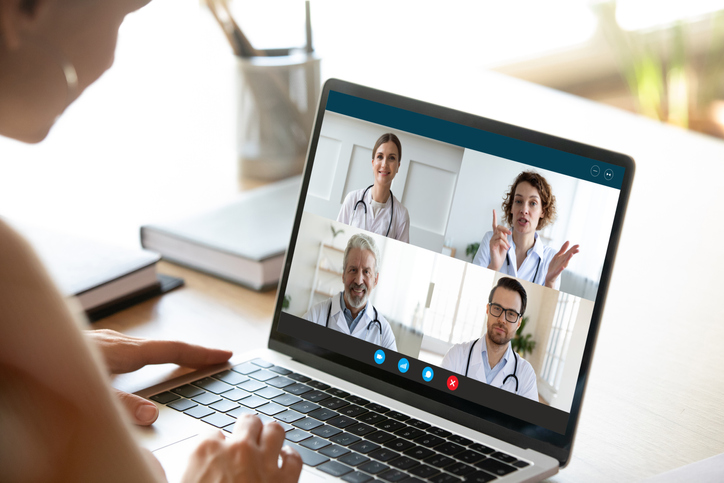As necessitated by COVID-19, many medical schools are moving courses to an online format. Clinical experiences are following suit, with virtual clinical experiences providing both safe and convenient opportunities for medical trainees to experience medicine as it is operated today—virtually!
You may be considering a virtual clinical experience to complete a school requirement, enhance a residency application, or earn a letter of recommendation. No matter the reason, you may want hands-on experience and wonder if it will even apply to virtual experiences. We are here to tell you that they can be considered hands-on!
Understanding Hands-On Clinical Experiences
Hands-on experiences offered through AMO include some form of patient interaction with the supervision of a physician. In many cases, this includes recording patient histories and assisting in physical examinations. During in-person experiences, physicians may have medical trainees participate in other specialty-specific, hands-on activities. Regardless of the type of interaction the physician allows, he or she must always be present, supervising the trainee. Failure to do so would violate HIPAA guidelines and regulations.
How They Translate Virtually
During a virtual clinical experience, those participating may have the opportunity to record medical histories and assist with physical examinations. These activities are facilitated through audio and video streaming technology, with the experience of communicating with patients and other healthcare professionals remaining much the same.
Engagement is the core of hands-on clinical experiences. Many times, a virtual experience can be more engaging than those that are in-person. Telemedicine is reliant on excellent communication, whether it’s between the physician and the patient or the medical trainee watching or assisting during the consultation. The physician you are rotating with will ask you questions before and after consultations. Such questions may be case-specific or related to the specialty at hand more generally.
Program-Specific Details
As with in-person experiences, the inclusion of activities considered hands-on might vary from one virtual program to another. If searching for a virtual clinical experience with AMOpportunities, program details are listed on the program pages. You can view and apply to AMO’s virtual and in-person clinical experiences by creating an account. To do so, click here.
If coming to the U.S. for an in-person hands-on experience is still your preference, most of our sites are open, operating, and looking to fill seats!
Fulfilling School Credit or Residency Application Requirements
If you are concerned that your medical school will not accept a virtual clinical experience as hands-on and it is a requirement, it’s essential that you contact your school. Many schools are changing or adjusting their requirements concerning these experiences.
If you are planning to use this experience to fulfill residency application requirements, you have nothing to worry about. Residency applications require the submission of three letters of recommendation. The content of these letters is the most crucial part. What do we mean by content? Content covers the body of the letter, which should highlight your character and plans for medicine as recorded by a physician, professor, or someone else. Second to content is the credentials of the individual writing the letter. Oftentimes, the type of experience, be it an observership, hands-on, or virtual rotation, have little effect on a residency program’s review of candidates.
Now that we clarified what a hands-on clinical experience entails and the role it can play in your medical education, we encourage you to apply to one of our many virtual clinical experiences!
Are you considering a virtual clinical experience?
If so, comment below with any questions you might have!







How do one get HIPAA certification (required for virtual rotations)? How much does it cost?
Please how can I apply for it
Hi Osei!
Applying for clinical experiences with AMOpportunties is free and easy! First, you’ll need to create an account with us online. You can get started here >> https://app.amopportunities.org/signup
For step-by-step instructions on apply, click here >> https://blog.amopportunities.org/2019/07/29/how-to-secure-a-rotation-with-amo
Hope that helps!
Osei,
Thanks for your interest in our clinical experiences! To explore and apply for the experience we offer, you’ll need to create an account with us online. You can get started here >> https://app.amopportunities.org/signup
Once you create an account, you’ll be able to search and sort experiences.
For step-by-step instructions on how to create an account and apply, click here >> https://blog.amopportunities.org/2019/07/29/how-to-secure-a-rotation-with-amo